
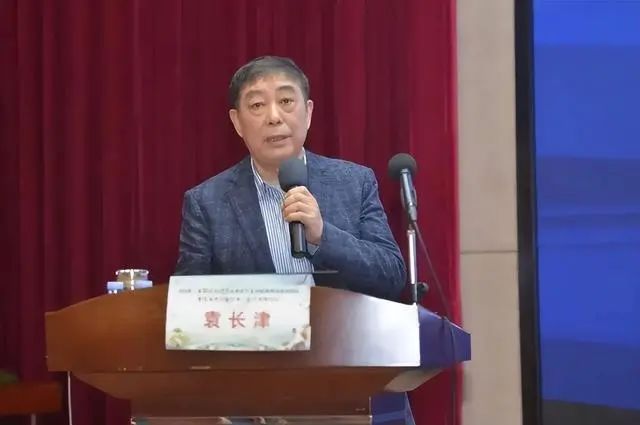 ▲Yuan Changjin, National Renowned TCM Practitioner (1946-)
▲Yuan Changjin, National Renowned TCM Practitioner (1946-)
Yuan Changjin, a national renowned TCM practitioner, is the chief physician at the Second Affiliated Hospital of Hunan University of Traditional Chinese Medicine. Here, he shares his experiences in expelling pathogenic factors, unblocking meridians, and supporting the body to treat Bi syndrome for the benefit of his colleagues.
Bi syndrome refers to a condition characterized by pain and discomfort in the joints and limbs, as well as movement difficulties, caused by the invasion of pathogenic factors such as wind, cold, dampness, and heat. As stated in the “Su Wen: Bi Lun”: “The three Qi of wind, cold, and dampness mix together to form Bi.” This means that the combination of these three pathogenic Qi invades the body, leading to obstruction of Qi and blood, resulting in pain, swelling, heaviness, numbness, and limited movement in the muscles, joints, and limbs, collectively referred to as “Bi syndrome.” If Bi syndrome persists for a long time, it can lead to joint deformities and even disabilities, which are referred to as “stubborn Bi” or “chronic Bi.”
Diagnosis and Treatment
Although Bi syndrome is primarily caused by the invasion of the three Qi of wind, cold, and dampness, the specific manifestations in individual patients often vary, leading to different clinical presentations. Therefore, the “Su Wen: Bi Lun” classifies Bi syndrome based on the dominant pathogenic factor: “If wind predominates, it is called Xing Bi; if cold predominates, it is called Tong Bi; if dampness predominates, it is called Zhuo Bi.” Although wind, cold, and dampness are considered Yin pathogens, they can obstruct the meridians and joints, leading to stagnation of Qi and blood. Over time, this can transform into heat, and more easily lead to the formation of blood stasis and phlegm, deeply affecting the joints and bones, damaging the liver and kidney Qi and blood, resulting in “stubborn Bi.”
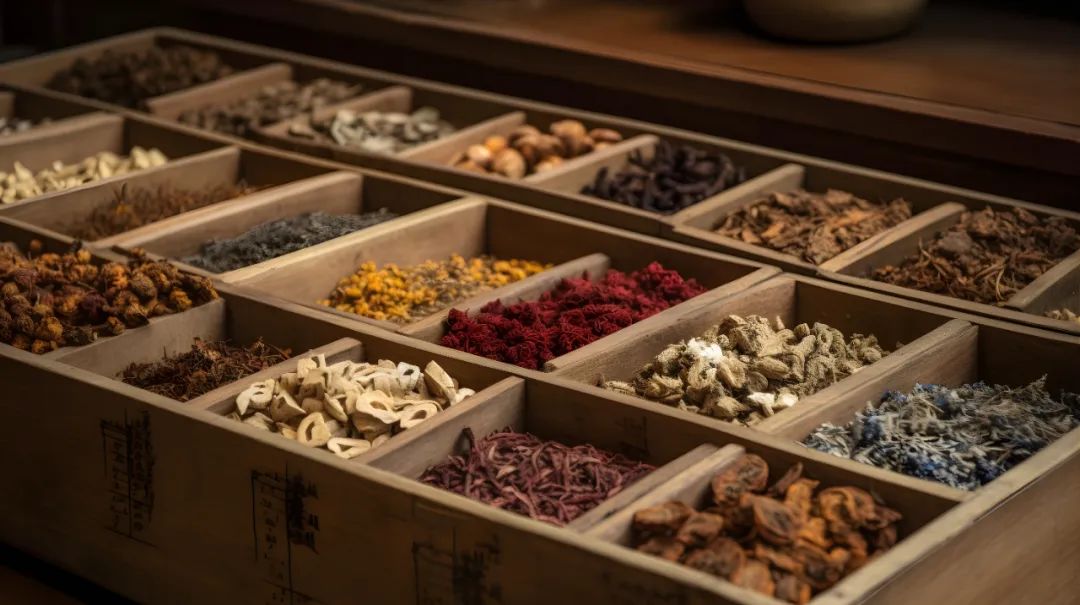
Based on the etiology and pathogenesis of Bi syndrome and his long-term clinical experience, the diagnosis and treatment of Bi syndrome can be divided into the following two major types:
1. Wind-Cold-Damp Bi
Characterized by pain in the muscles and joints, limited movement, aversion to wind and cold, or pain that migrates unpredictably, or sharp, stabbing pain, or swelling and discomfort in the painful areas, with a pale tongue and white coating, and a tight, slow, or weak pulse.
Treatment Method: Warm the meridians, disperse cold, expel wind, and eliminate dampness.
Formula:Gui Zhi Shao Yao Zhi Mu Tang (Cinnamon Twig and White Peony Decoction) with modifications: Gui Zhi (Cinnamon Twig) 10g, Bai Shao (White Peony) 12g, Fu Zi (Aconite) 10g, Fang Feng (Siler) 10g, Bai Zhu (White Atractylodes) 15g, Qiang Huo (Notopterygium) 10g, Du Huo (Angelica Pubescens) 10g, Yi Yi Ren (Job’s Tears) 30g, Zhi Gan Cao (Honey-Fried Licorice) 6g.
Formula Explanation:Gui Zhi and Fu Zi warm the meridians and disperse cold; Fang Feng, Qiang Huo, and Du Huo expel wind and eliminate dampness; Bai Zhu and Yi Yi Ren strengthen the spleen and eliminate dampness; Bai Shao nourishes the blood and softens the liver, and combined with Gan Cao, it alleviates pain.
Clinical Modifications:For severe chills and pain, add Ma Huang (Ephedra), Chuan Wu (Chuanwu), and Xi Xin (Asarum); for migratory pain, add Dang Gui (Angelica Sinensis) and Chuan Xiong (Chuanxiong) to nourish blood and expel wind; for significant swelling and heaviness, add Fang Ji (Stephania) and Cang Zhu (Atractylodes) and other herbs; for heat and thirst, or redness and swelling in the painful areas, reduce Fu Zi and add Zhi Mu (Anemarrhena), Sheng Shi Gao (Gypsum), Ren Dong Teng (Honeysuckle Vine), Huang Bai (Phellodendron), Sang Zhi (Mulberry Branch), and Xiang Fu (Cyperus); for Bi pain primarily in the upper limbs, add Wei Ling Xian (Clematis) and Jiang Huang (Turmeric); for Bi pain primarily below the waist, add Niu Xi (Achyranthes) and Mu Guo (Papaya); for chronic pain in the muscles and bones, add Xu Duan (Dipsacus) and Qian Nian Jian (Eclipta); for long-standing Bi pain with significant stiffness and numbness in the limbs, add Hai Feng Teng (Uncaria) and Qing Feng Teng (Clematis); for spleen and lung Qi deficiency, add Huang Qi (Astragalus); for liver blood deficiency, add Dang Gui, Ji Xue Teng (Spatholobus), and Gou Qi Zi (Goji Berries); for kidney deficiency, add Di Huang (Rehmannia), Yin Yang Huo (Epimedium), and Lu Xian Cao (Euphorbia).
Additionally, internal dampness and heat can lead to damp-heat obstruction; cold dampness can invade the meridians, obstructing the flow of Qi, blood, and body fluids, leading to phlegm and blood stasis obstruction. Therefore, in clinical practice, Bi syndrome with damp-heat and phlegm-stasis obstruction is also common, characterized by joint swelling and pain, especially in the finger joints of the upper limbs, often accompanied by burning pain and redness, with a purplish tongue and yellow greasy coating. The Zhu Danxi’s universal gout formula (Cang Zhu, Huang Bai, Fang Ji, Chuan Xiong, Qiang Huo, Bai Zhi, Wei Ling Xian, Tian Nan Xing, Gui Zhi, Tao Ren, Hong Hua, Long Dan Cao, Shen Qu) is often effective.
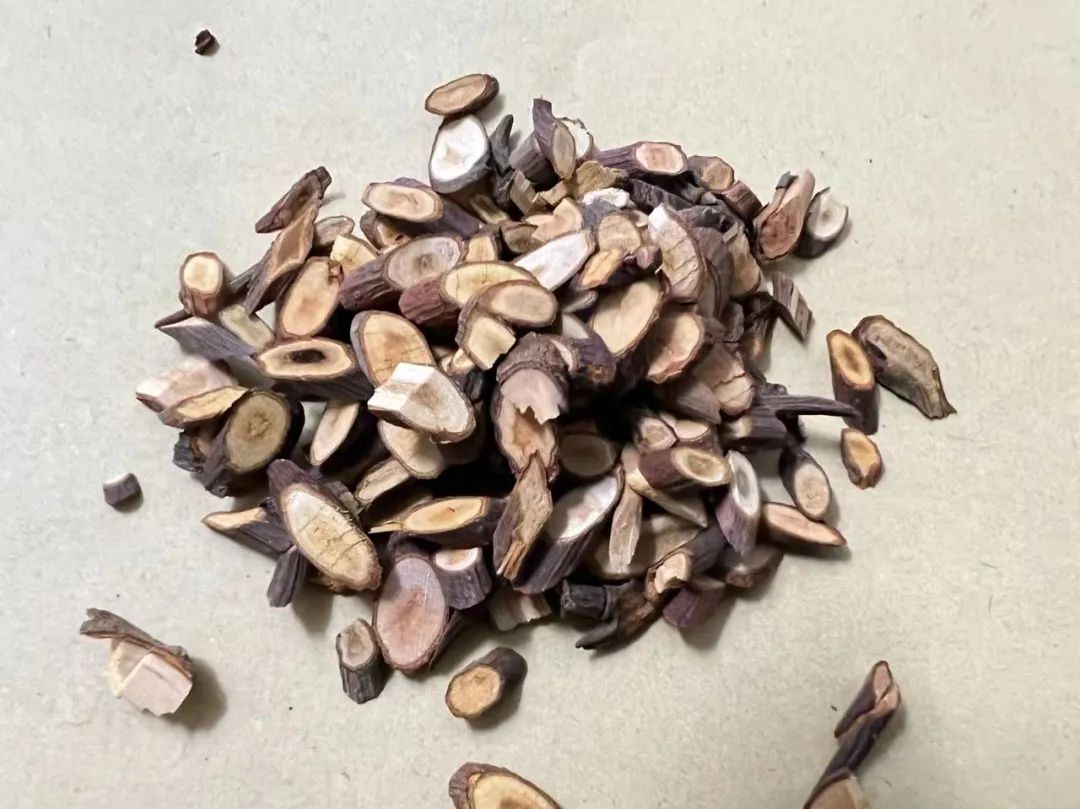
▲Gui Zhi (Cinnamon Twig)
2. Stubborn Bi
Clinically characterized by recurrent Bi syndrome, prolonged duration, severe limb pain, or significant swelling and heaviness, or numbness, joint stiffness and deformity, limited movement, and even disability, or darkened skin and nails, with a purplish tongue and a deep, thin, or thin and wiry pulse.
Stubborn Bi primarily due to excess pathogenic factors is often associated with blood stasis and phlegm obstruction. The treatment should focus on invigorating blood circulation, dispersing blood stasis, and transforming phlegm to unblock the meridians, while also supporting the body. Formulas such as Wang Qingren’s Shen Tong Zhu Yu Tang (Body Pain Dispersing Blood Stasis Decoction) and the “Ju Fang” Xiao Huo Luo Dan (Minor Activating Collaterals Pill) (Chuan Wu, Cao Wu, Tian Nan Xing, Di Long, Ru Xiang, Mo Yao) can be used with modifications. The Shen Tong Zhu Yu Tang formula is comprehensive, with clear priorities, and is widely applicable, containing Dang Gui, Chuan Xiong, Tao Ren, Hong Hua, Mo Yao, and Xiang Fu to invigorate blood and dispel stasis, regulate Qi and alleviate pain; Wu Ling Zhi and Di Long to transform phlegm and disperse blood stasis to unblock the meridians; Qiang Huo and Qin Jiao to expel wind and dampness, treating Bi pain; Niu Xi to strengthen muscles and bones; and Gan Cao to harmonize the herbs. For those with damp-heat, add Cang Zhu and Huang Bai; for those with aversion to wind and cold, add Gui Zhi and Fu Zi; for those with severe pain, add Chuan Shan Jia (Pangolin) and Quan Xie (Scorpion) to unblock the meridians and relieve spasms; for Qi deficiency, add Huang Qi; for Yin deficiency, add Sheng Di.
In cases of stubborn Bi with deficiency of the righteous Qi and excess of pathogenic factors, it is often due to prolonged illness affecting the liver and kidney Qi and blood, leading to weakness. The treatment should focus on supporting the righteous Qi and expelling pathogenic factors, addressing both the root and the branch. Formulas such as “Fu Ren Liang Fang” San Bi Tang (Three Bi Decoction) (Huang Qi, Ren Shen, Chuan Xiong, Shu Di, Bai Shao, Dang Gui, Xu Duan, Du Huo, Qin Jiao, Fang Feng, Rou Gui, Xi Xin, Du Zhong, Niu Xi, Gan Cao, Sheng Jiang) are recommended, with an emphasis on using a larger dose of Huang Qi. The renowned TCM master Zhu Liangchun developed the Yi Shen Juan Bi Wan (Kidney Tonifying and Bi Expelling Pill), primarily composed of large doses of Di Huang, Dang Gui, Yin Yang Huo, and Ji Xue Teng, along with seven types of insect medicines such as Wu Shao She (Black Snake), Quan Xie, and Wu Gong (Centipede) to transform blood stasis, unblock the meridians, and dispel pathogenic factors, showing good efficacy for long-standing stubborn Bi with blood stasis and Qi deficiency.
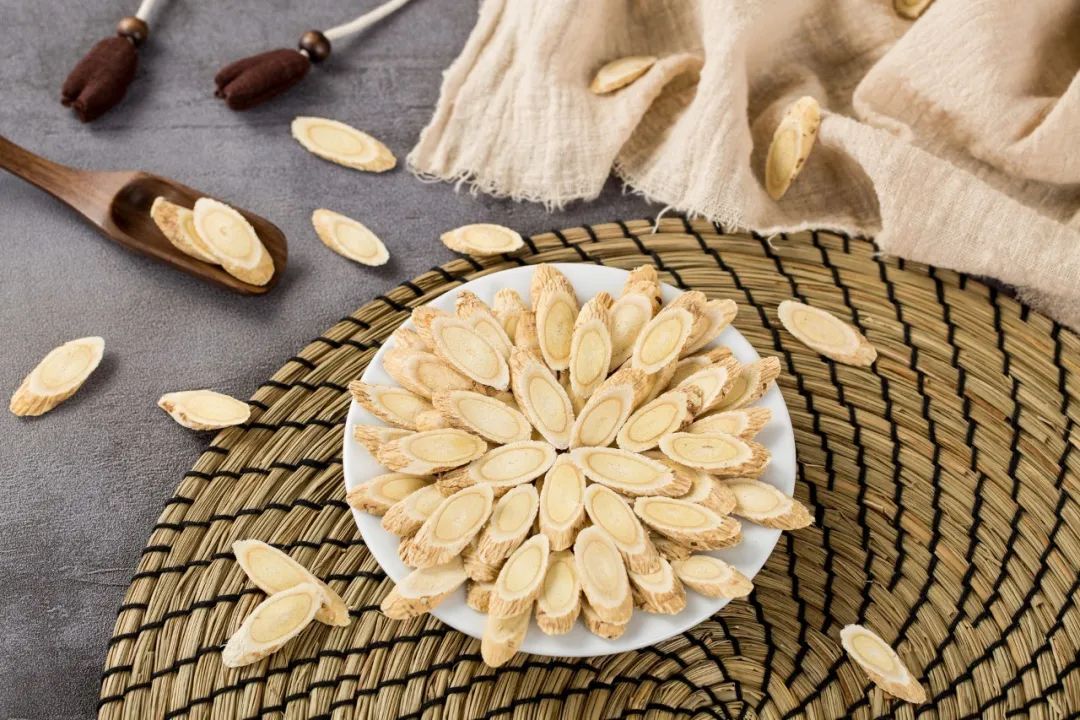
▲Huang Qi (Astragalus)
Case Study
Ye, a 68-year-old female patient, was first diagnosed on March 26, 2005.
The patient complained of pain in the left heel and intermittent pain in the right shoulder and wrist joints for nearly one year.
In April 2004, the patient first experienced pain in the left heel, which soon migrated to the right shoulder and wrist joints. Initially, taking painkillers such as Fenbid could relieve the pain, but later it became ineffective, and the pain progressively worsened, extending to the right elbow and shoulder joints. She had visited multiple hospitals with poor results. Western medical examinations showed positive rheumatoid factor, but no other abnormalities. Infrared thermal imaging indicated degenerative changes in the cervical and lumbar spine, diagnosed as cervical and right shoulder myofascial pain syndrome. After the Spring Festival this year, the patient was hospitalized at another hospital for over a month, receiving anti-inflammatory and steroid treatments, but still showed no significant improvement.
The patient currently has stiffness and swelling in the right shoulder, wrist, and hand joints, especially severe at night, with pain like a knife or insect bite, making it difficult to sleep. When the pain subsides, there is a sensation of ants crawling under the skin; she is sensitive to heat, with dry, darkened skin and nails on the back of the right hand and forearm, and muscle atrophy in the palm, especially at the base of the thumb, which is tender to touch. The wrist joint has limited movement, and the finger and elbow joints are difficult to flex and extend. The right shoulder joint is difficult to extend, and she cannot lift her arm. The face is red and swollen, especially at the right cheek and forehead (possibly related to steroid use), with fatigue, normal appetite, slightly dry and constipated stools, urinating short and yellow, a dark red tongue, thick white coating with a powdery accumulation in the middle, and a thin, wiry pulse.
Diagnosis: Wind, dampness, cold, and heat obstructing the meridians and joints.
Treatment Method: Clear heat, eliminate dampness, disperse cold, expel wind, and unblock the meridians.
Formula:Gui Zhi 6g, Bai Shao 15g, Zhi Mu 10g, Gan Cao 6g, Huang Bai 10g, Yi Yi Ren 25g, Chao Cang Zhu 10g, Ren Dong Teng 20g, Yin Yang Huo 10g, Shi Gao 30g, Sheng Di Huang 30g, Fang Feng 10g, Qin Jiao 10g, Shu Fu Zi 5g, Bai Zhu 10g, Ma Huang 4g. 7 doses. One dose per day, decocted in water, taken in two portions. Instructed to stop all Western medications and avoid spicy foods.
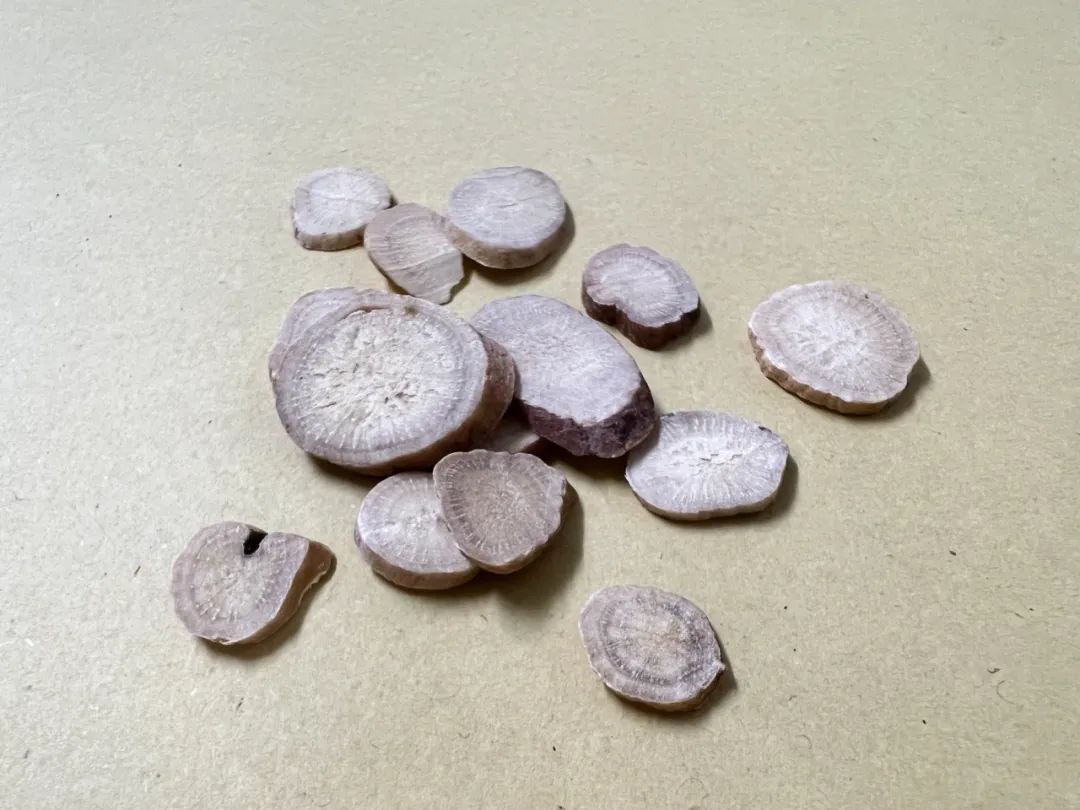
▲Bai Shao (White Peony)
Second Diagnosis (April 2): Burning sensation decreased, facial redness faded, but shoulder pain persisted, with yellow and hot urine and smooth bowel movements. The tongue coating became thinner, and the pulse was wiry and floating. Continued with the previous method, adding insect medicines to unblock the meridians and cool the blood to transform stasis.
Formula:Gui Zhi 10g, Bai Shao 15g, Zhi Mu 10g, Gan Cao 6g, Shi Gao 30g, Sheng Di Huang 30g, Mu Dan Pi 10g, Huang Bai 10g, Chao Cang Zhu 10g, Ren Dong Teng 20g, Fang Feng 10g, Qin Jiao 10g, Qiang Huo 10g, Quan Xie 4g, Wu Shao She 10g, Wu Gong 1 piece.
Third Diagnosis (April 23): After taking the above formula for 15 doses, the pain in the right upper limb significantly decreased, and the pain location was no longer fixed. The facial redness and swelling disappeared, and the skin on the back of the right hand peeled off, returning to a normal color. The tongue was red, with a thin white coating, and the pulse was thin and rough. The damp-heat gradually cleared, and the treatment should now focus on invigorating blood and transforming stasis, with additional herbs to promote Qi and unblock the meridians.
Formula:Mu Dan Pi 10g, Sheng Di Huang 30g, Dang Gui 10g, Chuan Xiong 10g, Chi Shao 10g, Hong Hua 6g, Tao Ren 10g, Quan Xie 4g, Wu Shao She 1 piece, Di Long 10g, Qin Jiao 10g, Ren Dong Teng 20g, Zhi Ru Xiang and Zhi Mo Yao each 10g, Chao Xiang Fu 10g, Chao Cang Zhu 10g, Huang Bai 10g. 14 doses.
Fourth Diagnosis (May 7): The Bi pain has become very mild, with occasional burning sensations at the fingertips, and the skin flakes have gradually disappeared, with normal skin color restored. The slight crawling sensation has disappeared, and the right arm can move freely. The tongue is red, with a light yellow coating, and the pulse is deep and rough. Continued with the treatment to invigorate blood and transform stasis, unblock the meridians, and support Qi and nourish blood to consolidate the treatment effect.
Formula:Huang Qi 30g, Qin Jiao 10g, Qiang Huo 10g, Fang Feng 10g, Dang Gui 12g, Chuan Xiong 10g, Chi Shao 10g, Sheng Di Huang 30g, Gan Cao 6g, Gui Zhi 6g, Wu Shao She 12g, Quan Xie 1 piece, Ji Xue Teng 15g, Ren Dong Teng 20g, Chao Zhi Ke 10g, Zhi Ru Xiang and Zhi Mo Yao each 10g. 14 doses.
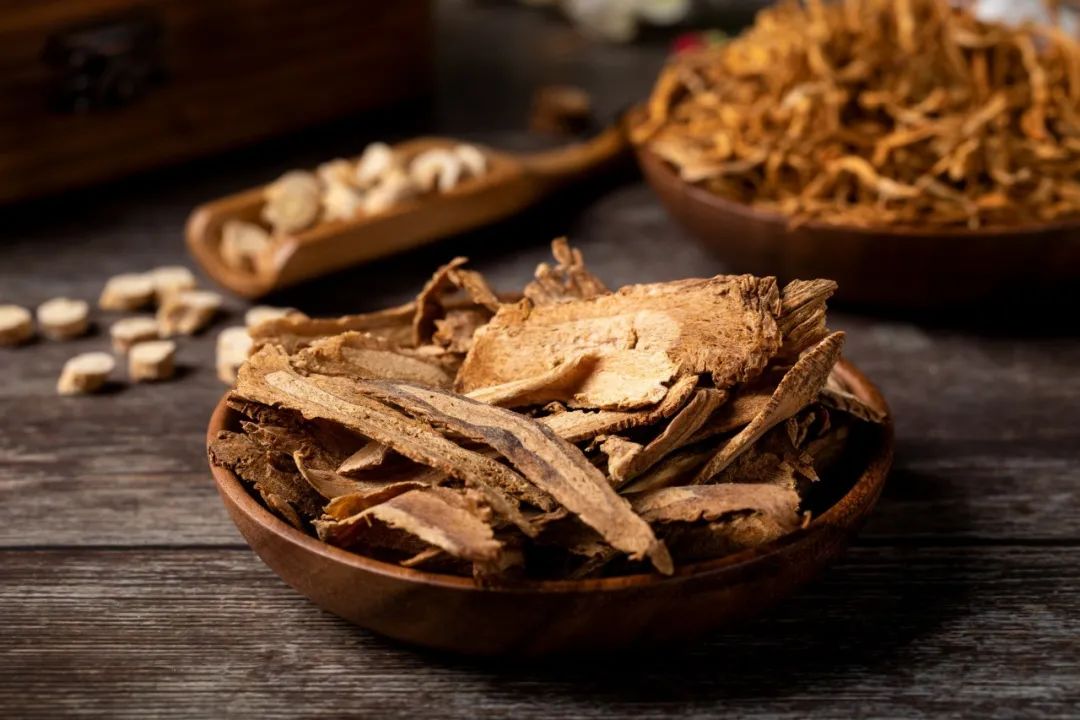
▲Dang Gui (Angelica Sinensis)
Note: This case involved a patient suffering from Bi pain for many days, diagnosed by Western medicine as “myofascial pain syndrome,” with positive rheumatoid factor, and treated with Western medications for rheumatism, pain relief, steroids, and antibiotics for nearly a year, with unsatisfactory results, classified as “stubborn Bi.” Through TCM differential diagnosis and treatment, the patient was essentially cured in just one and a half months. In clinical treatment of “stubborn Bi,” the following considerations are often taken into account when selecting formulas and herbs:
First, a combination of cold and warmth is often used. The basic etiology and pathogenesis of Bi syndrome is the obstruction of the meridians by wind, cold, and dampness, leading to pain when obstructed and relief when unblocked. Therefore, the TCM sage Zhang Zhongjing’s formulas for treating Bi syndrome often include warming herbs like Gui Zhi and Fu Zi. Even in cases of long-standing stubborn Bi, which may transform into what is called “heat Bi,” warming herbs should not be completely discarded. For example, when this patient presented for treatment, there was a significant sign of Yang heat, but the formula still included cooling herbs like Shi Gao, Huang Bai, Zhi Mu, and Sheng Di Huang to clear heat and nourish Yin, while also including small doses of Gui Zhi and Fu Zi to warm and unblock the meridians, preventing the adverse effects of cold stagnation.
Second, emphasis is placed on invigorating blood and transforming stasis. Prolonged pain can lead to blood stasis obstructing the meridians. Therefore, for treating stubborn Bi, Zhang Xichun’s Huo Luo Xiao Ling Dan (Activating Collaterals and Efficacious Spirit Pill) and the modified Tao Hong Si Wu Tang (Peach Blossom Four Substance Decoction) are often used (as in the basic formula for the third diagnosis), or Wang Qingren’s Shen Tong Zhu Yu Tang (Body Pain Dispersing Blood Stasis Decoction) (as in the basic formula for the fourth diagnosis) to invigorate blood, transform stasis, unblock the meridians, and relieve pain, which has shown remarkable efficacy.
Third, the use of insect medicines for searching and expelling is important. For stubborn Bi that has not responded to treatment, especially when joint stiffness and deformity occur, it is often due to the obstruction of pathogenic factors. In such cases, insect medicines like Quan Xie, Wu Shao She, and Tu Bie Chong (Earthworm) are used to penetrate the bones, expel wind, relax the muscles, dispel toxins, and reduce swelling and pain.
Fourth, do not forget to support the righteous Qi and expel pathogenic factors. The struggle between righteous and pathogenic factors is a fundamental pathology in TCM. Prolonged illness can damage the righteous Qi, so for stubborn Bi that has not improved, it is essential to support the righteous Qi while expelling pathogenic factors, addressing both the root and the branch. Therefore, the formulas used in the first two diagnoses focused on clearing heat, eliminating dampness, and warming and unblocking the meridians, while still including herbs like Dang Gui, Bai Shao, Bai Zhu, Cang Zhu, and Sheng Di Huang to nourish the liver, relax the muscles, strengthen the spleen, eliminate dampness, and nourish the kidneys; the formulas used in the last two diagnoses focused on invigorating blood and transforming stasis, but also included large doses of Huang Qi to tonify Qi and nourish blood, supporting the righteous Qi and expelling pathogenic factors.
Important Statement:
Due to individual differences in constitution and condition, the formulas and dosages in this case are only applicable to this patient at the time of treatment. Without TCM differential diagnosis and treatment, do not replicate the prescriptions and dosages in this case. Readers in need should seek treatment at a legitimate hospital to avoid delaying their condition. ■
【Source: China Traditional Chinese Medicine News, content excerpted from “China Traditional Chinese Medicine News” February 24, 2014, Fifth Edition, Yuan Changjin’s Clinical Column】Recommended Reading





